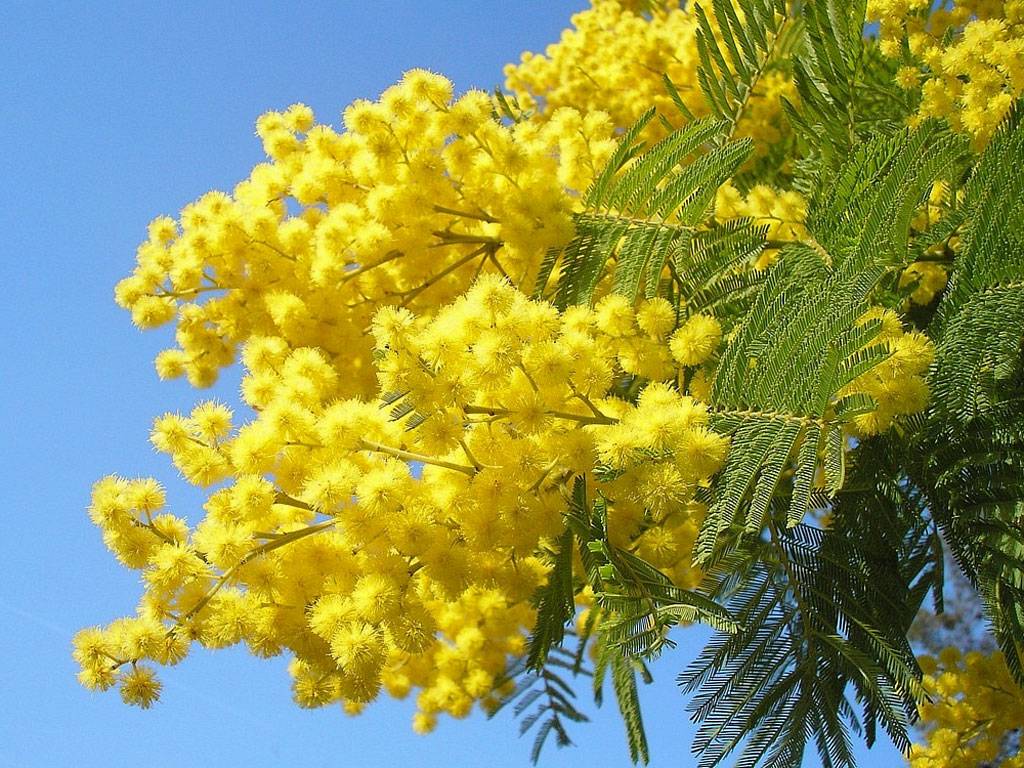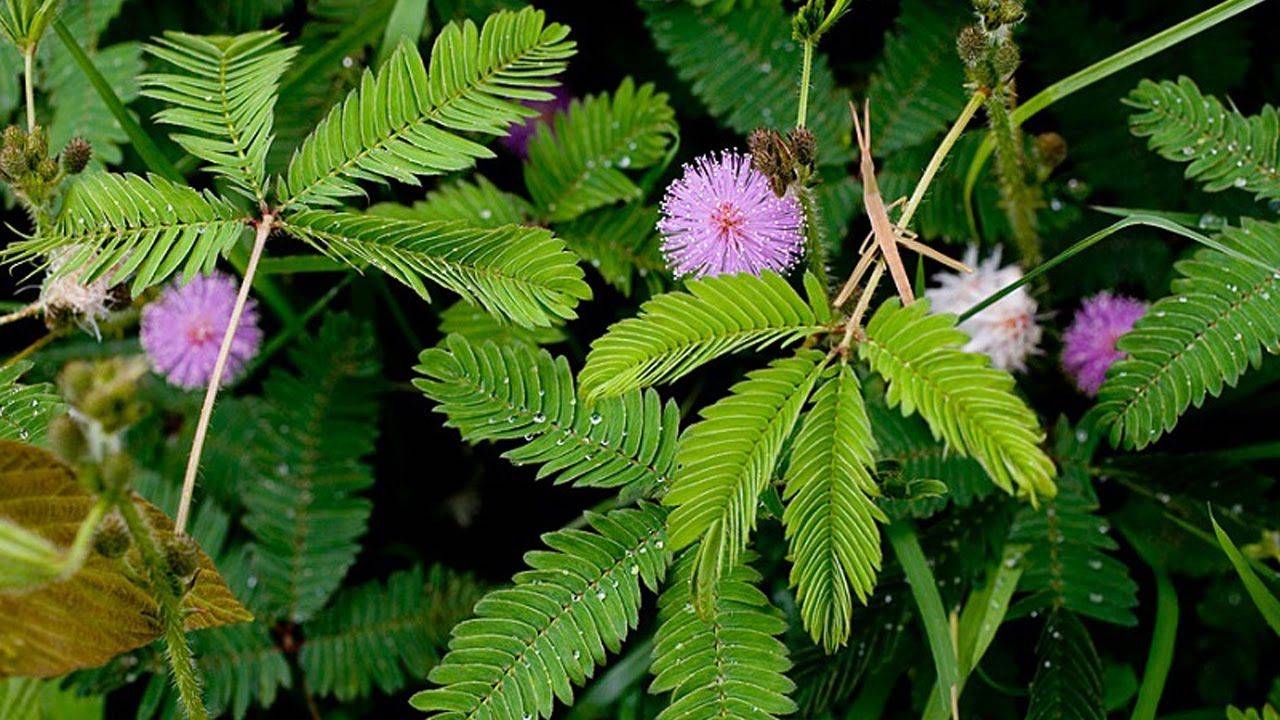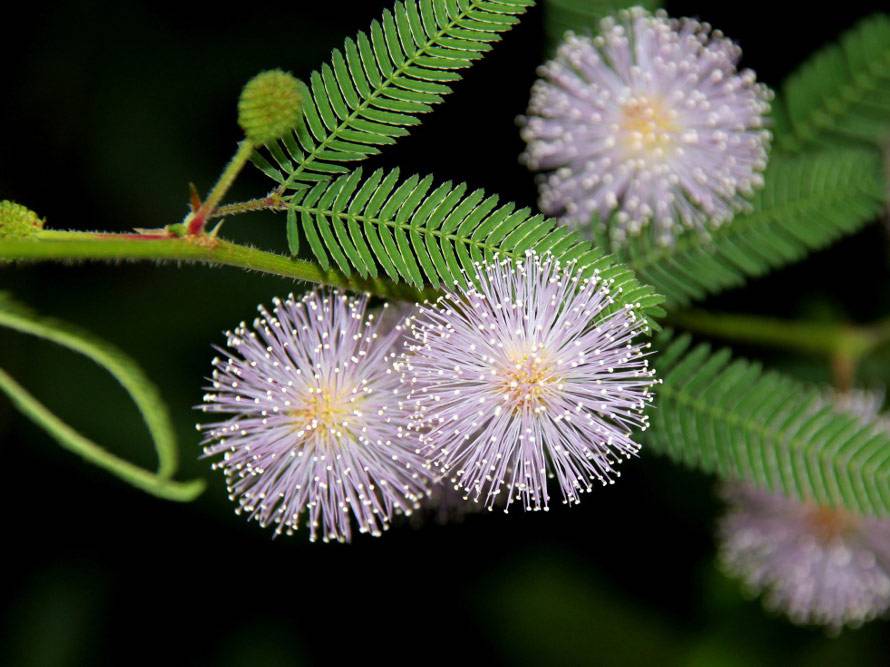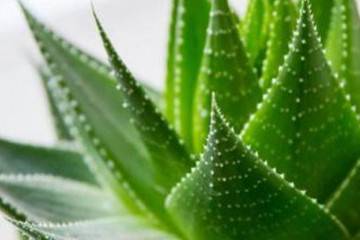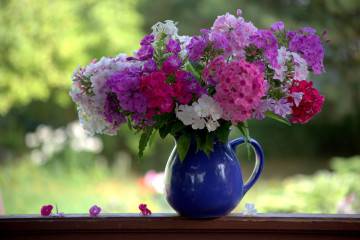Mimosa - what is this flower, what does it look like
Content:
In Russia, mimosa has long been one of the symbols of March 8th. The bright yellow flowers, shaped like small balls, look great against a snowy background. But you can buy mimosa not only once a year. If desired, the plant is quite easy to grow at home. To do this, you should know what homemade mimosa looks like, and familiarize yourself with the main measures for caring for a flower.
Mimosa - tree or shrub
Inexperienced gardeners often wonder: what is mimosa - is it a bush, tree or grass. It should be noted here that it originally appeared in Australia and belongs to a variety of evergreen shrubs. Usually mimosa grows up to 60-80 cm, but it can reach up to 1.5 meters. So, it is wrong to consider it a tree.
This perennial is also sometimes called silver acacia. It has a very pleasant appearance. Small leaves are located on small branches of the bush, and the inflorescences form panicles of flowers in the form of balls.
The plant is pollinated by wind or insects. The vegetative period is very long - it can last up to 4 months, after which the pods appear, in which the mimosa fruits are hidden.
Common types of mimosa
There are many varieties of mimosa - garden, white, Chinese, bashful, rough, lazy, muffled and others. For those who decide to plant a shrub in the garden for the first time, it is better to take one of the most common varieties for this.
Mimosa pudica - bashful mimosa
The plant loves to grow in damp places and thickets. Most often in the wild, it can be found in the Antilles and in Brazil. Outwardly, it is similar to most shrubs and shrubs, shoots grow up to 1 meter. A distinctive feature is the presence of thorns and pubescence of flowers.
Buds bloom in dense groups at the tops of the shoots. They can be pink or purple. The growing season is in the summer.
Mimosa scabrella - rough mimosa
Picture 2 Mimosa scabrella
Flowers of this species are collected in large white panicles. The native land of the shrub is the rainforests of South America.
The botanical description of the variety says that it is a real giant among its congeners - it grows up to 20 meters in height.
Mimosa pigra - lazy mimosa
This is a very beautiful ornamental shrub, its size rarely reaches 50 cm.
Due to its appearance and compact size, this species can be grown as a houseplant. The leaf plates are quite sensitive to touch.
This is a mimosa, the flowers of which will surely please with a white shade, they gather in spherical inflorescences and look simply amazing.
Home care rules
Before planting a houseplant at home, you should know how decorative mimosa grows and how to properly care for it.
Lighting and temperature control
For proper growth, the shrub must be provided with a sufficient amount of light. It is best to put it on the south side of the house, and only in very extreme heat to protect it from direct exposure to sunlight.
The bush grows actively from mid-spring to mid-autumn. At this time, he needs to keep the temperature in the room around +25 ° С, and in winter during the rest period it is enough not lower than +18 ° С.
Mimosa is a flower that is afraid of cold and drafts, so it is recommended to take it out of the room during airing.
Watering rules and humidity
A resident of the tropics needs a lot of water. It is necessary to water the indoor flower twice a day - in the morning and in the evening. In winter, the amount of moisture can be reduced, but the soil must not completely dry out. Water must be used settled, at room temperature, without impurities and chlorine.
To ensure sufficient moisture conditions during the flowering period, the leaves must be sprayed with a spray bottle. In this case, you need to ensure that water does not fall on the flowers. A tray of water can be placed next to the pot.
Top dressing and soil quality
Mimosa is a plant that requires medium acidity or slightly acidic soil for its active growth. You can buy it in a store or make it yourself by mixing the following components in equal proportions:
- river sand;
- turf;
- leaf humus or peat.
In addition to soil, regular feeding is an important part of proper maintenance. Fertilization is necessary during the growing season from early spring to late summer. This is done at intervals of 12-14 days.
Flower container size
For planting a young bush, a not too large container is chosen - 15 cm in diameter is enough. Then, with transplants, the volume of the pot increases by several centimeters each time.
Pruning and replanting
In order to preserve the decorative appearance of the plant, it is necessary to prune the tops of the main shoots. This should be done before and after flowering. However, this should be done carefully. If you overdo it, then the mimosa can die.
The bush should be repotted after winter, when it becomes cramped in the pot. For this, a larger container is taken and the same soil is used as in the last planting. After completing the procedure, the plant must be watered abundantly.
How mimosa blooms
Most shrub varieties bloom from mid-spring to mid-autumn. In winter, they have a dormant period. When the flowers wither, it is necessary to reduce the number of watering and dressing.
Mimosas are characterized by flowers in the form of fluffy balls that form inflorescences of various colors. Depending on the variety, they can be white, yellow, pink or purple.
Reproduction methods
The indoor variety can be propagated in two ways: cuttings or seeds.
The first method is less common, since the survival rate of the planting material is very low. Cuttings are rarely used even by experienced gardeners. If this method is nevertheless chosen, then the lignified stems are treated with growth stimulants and placed in water or peat.
More often in horticulture, seed propagation is used. For this, the plant is first pollinated. Then you have to wait for the pods with beans to appear. When they dry, they are placed in the refrigerator until spring.
After the winter period, seeds are planted in peat or nutrient substrate. The container is covered with a transparent film and when the first leaves appear, the seedlings are planted in separate pots.
Diseases and pests
The main problems of mimosa are usually associated with improper care. Most often this is expressed by yellowing and falling leaves.If the room is cold and not light enough, then the plant may not bloom.
Of the pests for mimosa, the most dangerous are aphids, spider mites and whiteflies. An effective method of dealing with them is to treat the bush with insecticides.
Thus, with proper care, you can grow a bright plant at home, which with its flowers will symbolize the onset of spring.
